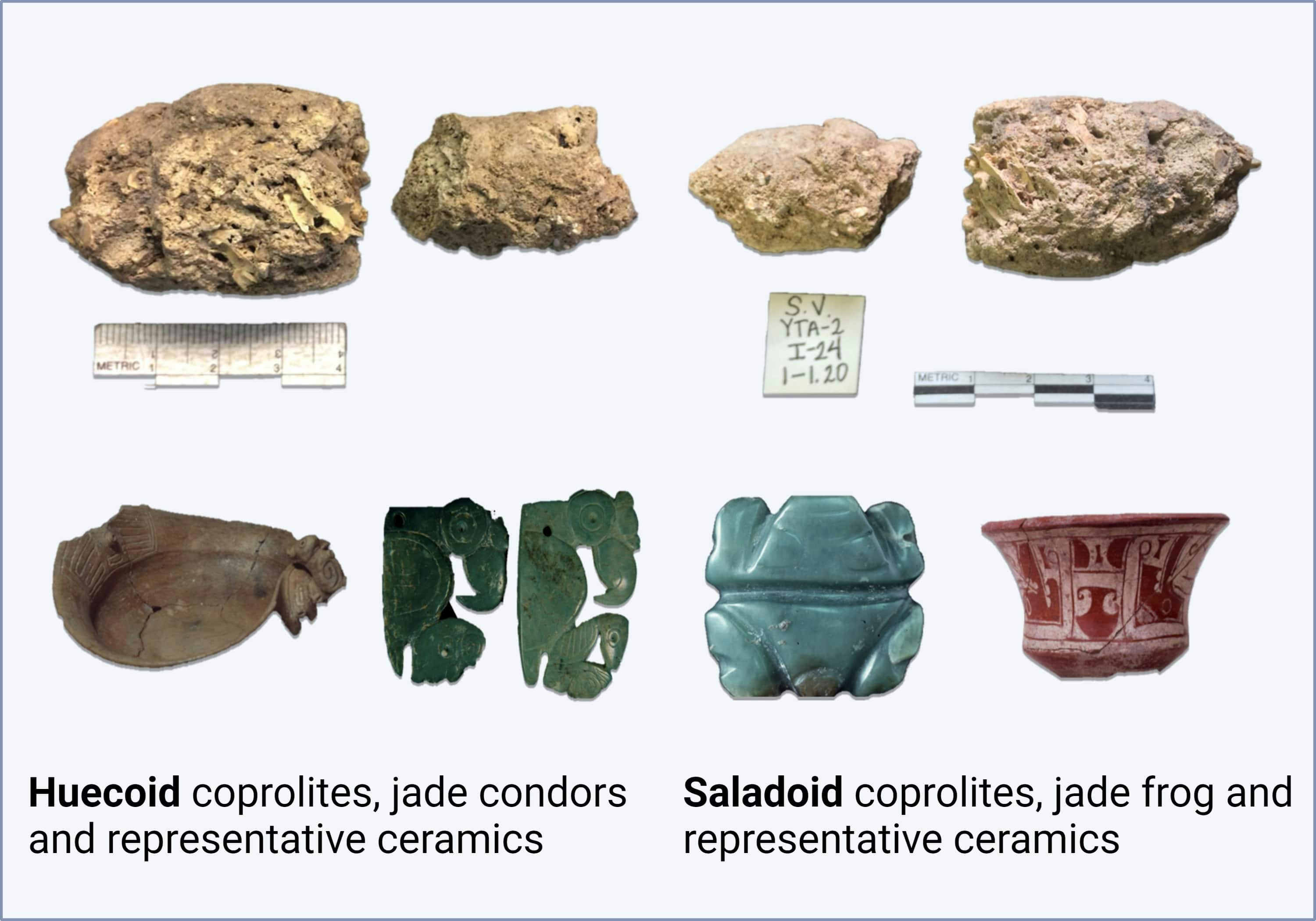
Poop is an unlikely biographer of human life, but it can hold rich and varied stories. Fossilized feces, known as coprolites, have revealed the diets of ancient humans, what their gut bacteria microbiome was like, and even what viruses and bacteria were afflicting them.
For bygone cultures, coprolites can fill in the blanks or confirm what we can’t know from other artifacts. Pre-Columbian cultures, or cultures in Central and South America before Columbus’ arrival, still leave questions for anthropologists and archaeologists to uncover.
Such questions arise when we find things that aren’t traditionally considered food, like cotton and tobacco, as happened with a 1500-year-old coprolite found in present-day Puerto Rico. In a paper published today in the journal PLOS ONE, researchers in Puerto Rico, Minnesota, and California offer evidence and speculation on why these plant remnants appeared in human waste from two ancient cultures.
Unexpected traces
A team examined plant DNA present in a 1500-year-old coprolite sample from Vieques, Puerto Rico, to reconstruct the diet and surrounding plant life of two cultures called the Huecoids and Saladoids, who co-inhabited Puerto Rico in the centuries before Columbus’s arrival. They analyzed 6 Huecoid samples and 4 Saladoid samples.
“Poop gives us a hell of a lot of information,” Gary Antonio Toranzos Soria, senior author of the paper and microbiology professor at the University of Puerto Rico, tells Inverse. Toranzos Soria is well acquainted with these particular coprolites. He co-authored a 2014 paper also published in PLOS ONE on the microbiota present in the very same samples, as well as a 2015 PLOS ONE paper that used this fossilized poop to determine the meat they ate.
This time, he was looking for plant DNA indicative of these cultures’ diet and surrounding flora. He and his team found the DNA of plants consistent with the expected diet, including peanuts, papaya, maize, and chili peppers. Surprisingly, he also found tobacco and cotton.
Finding traces of these crops “really blew our minds,” Toranzos Soria tells Inverse because they weren’t typically ingested.
Imagining a plausible reality
In the paper, the researchers float the possibility that the Huecoids and Saladoids could have eaten these plants but strongly suspect they got there another way. “We are pretty sure these people didn’t munch on their underwear,” Toranzos Soria jokes.
His team points to two plausible hypotheses for cotton’s presence. The Huecoids and Saladoids may have used the admittedly bitter cotton oil as a food additive, or they incidentally swallowed cotton fibers while preparing yarn, sometimes by wetting the fibers in their mouth. Toranzos Soria’s archaeology colleagues informed the team that cotton DNA has also appeared between teeth in dental samples from Huecoids and Saladoids, which further supports this weaving theory. What’s more, women traditionally practiced weaving in these cultures, suggesting that the coprolites containing cotton came from women.
They hypothesize that tobacco may have been ingested from chewing, though the authors note they couldn’t find any reference to chewing tobacco in pre-Columbian practices. There is evidence, though, that a blend of pulverized herbs, including tobacco, might have served as a sort of snuff for someone to inhale through their nostrils. Pre-Columbian cultures also employed tobacco as medicine and hallucinogens.
Matthew Biwer, a paleoethnobotany professor at Dickinson College who is not affiliated with this research, seconds the hypothesis that these groups ingested tobacco as a hallucinogen. He also corroborates the plausibility of cotton ingestion from weaving, though he adds its presence is “more complicated.”
A story of commerce
Even larger than the actual findings are the findings’ implications for human interaction. “Some of these data (as well as data published by our group previously) indicate an active trade between the continents and Puerto Rico,” Jelissa Reynoso-García, the study’s first author and a postdoctoral microbiology researcher at the University of California, Davis, writes to Inverse. This trade likely included other Caribbean islands, she adds.
Toranzos Soria marvels at how this research fits into a larger story of commerce. In a previous paper looking at DNA of animal proteins that might suggest diet in these coprolites, he and his team found DNA from monkeys and rats that didn’t exist in Puerto Rico at that time, for which “the only plausible explanation is that these people actively traded with likely South America and perhaps Central America,” he says.
Biwer sees the value in this finding, too. “The archaeological connections between South America and the Caribbean are documented and debated, so it is fantastic that the authors find these connections preserved in the diet of the cultures in Puerto Rico,” he writes to Inverse. “It really adds a new layer to the conversation.”
That new layer is what Toranzos Soria hopes to cultivate as he continues to research these ancient peoples. “Hopefully, in the future, somehow people will find something that proves once and for all that yes, there was trade between the continent and the islands around the Caribbean.”







